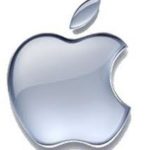These days any effective digital marketing strategy needs to be personalised. Gone are the days of the round robin email or “one size fits all” ad: to gain the competitive advantage you need to know your target audience and speak to them direct. A little like the digital marketing equivalent of Pokemon Go …. You have to hunt them down, pursue them and capture them!
Sometimes the thought of personalising all our marketing can feel a little cheesy. We’ve all had those chirpy emails addressing us by name and making some optimistic presumption that isn’t anywhere accurate (“no I really do not want to waste a day of my life attending this ghastly sounding seminar thanks!”). So how can we get it right? How can we ensure that our digital marketing is sufficiently personalised and intelligent to win people over without them feeling either stalked or stereotyped.
Try these 3 strategies for effective, personalised, digital marketing!
1. Advertisements
Regular use of data and analytics will ensure that you pitch the right advert to the right audience at the right time. Whether the adverts are display, mobile, video, or native, programmatic technology makes it possible to personalise these and maximise effectiveness. Personalisation can be particularly powerful when used to persuade a customer to complete an unfinished transaction. One company that does this is Sears in Canada, whose Director, Online User Experience & Strategic Initiatives – Nurullo Makhmudov – explains “When we are serving back to the consumer the same products that they are interested in or had researched, it provides a reminder and a comfort of convenience of access.”
2. Content
Personalised content can take various forms. One example is to personalise content on your website. In 2015 Forbes began using technology from Gravity to customise the content recommendations that appear to readers in the Promoted Stories section of its site, based on analysis of the topics that readers engage with most often. Forbes has also undertaken recent analysis of 30 CMOs – Publish or Perish – which found that marketers that deliver personalised web experiences are getting double digit returns in marketing performance and response.
Another obvious example of personalised content is social media. Personalised branded content can be created by specific responses to tweets or other social media postings. Companies are also able to tailor offers to their online followers, for example last year, American Express offered Twitter users personalised digital autographs from the musician Pharrell as part of promoting its sponsorship of a series of concert films. Travelocity ran a competition in which users shared their dream destinations using the #IWannaGo hashtag for a chance to win a trip – which gained them more than 34,000 followers.
Campaigns such as these enable people to connect with an aspect of the brand and content in a personalised way then become interested in the brand itself.
3. Wearables
Initially this can seem quite a niche area but how better to personalise a brand interaction than by a consumer sporting a wearable device! Think about the Apple Watch for example, and the increased level of brand intimacy it can offer over and above Apple mobile phones and tablets.
According to Matt Goddard, CEO of digital marketing company R2integrated: “wearables represent an opportunity to deliver more personalised, more relevant, more targeted, more timely and more connected experiences. . . . . “For the marketer, understanding consumer behaviour and using that data to achieve attribution of marketing touch points should be a key focus when building an integrated wearable strategy.”
Whilst wearable technology is currently best known for watches and fitness bands, this is a growth area that you should keep an eye on in terms of digital marketing. Other items are now available – such as smart clothes, audio visual gadgets, sleep masks, optical viewers, augmented reality computers and sensing systems – and more are being developed as we speak!
The future of digital marketing is bright and the future is personal! Unless you build into your digital marketing strategy the potential to get up close and personal with your customers – past, present and future – you risk getting left behind.

